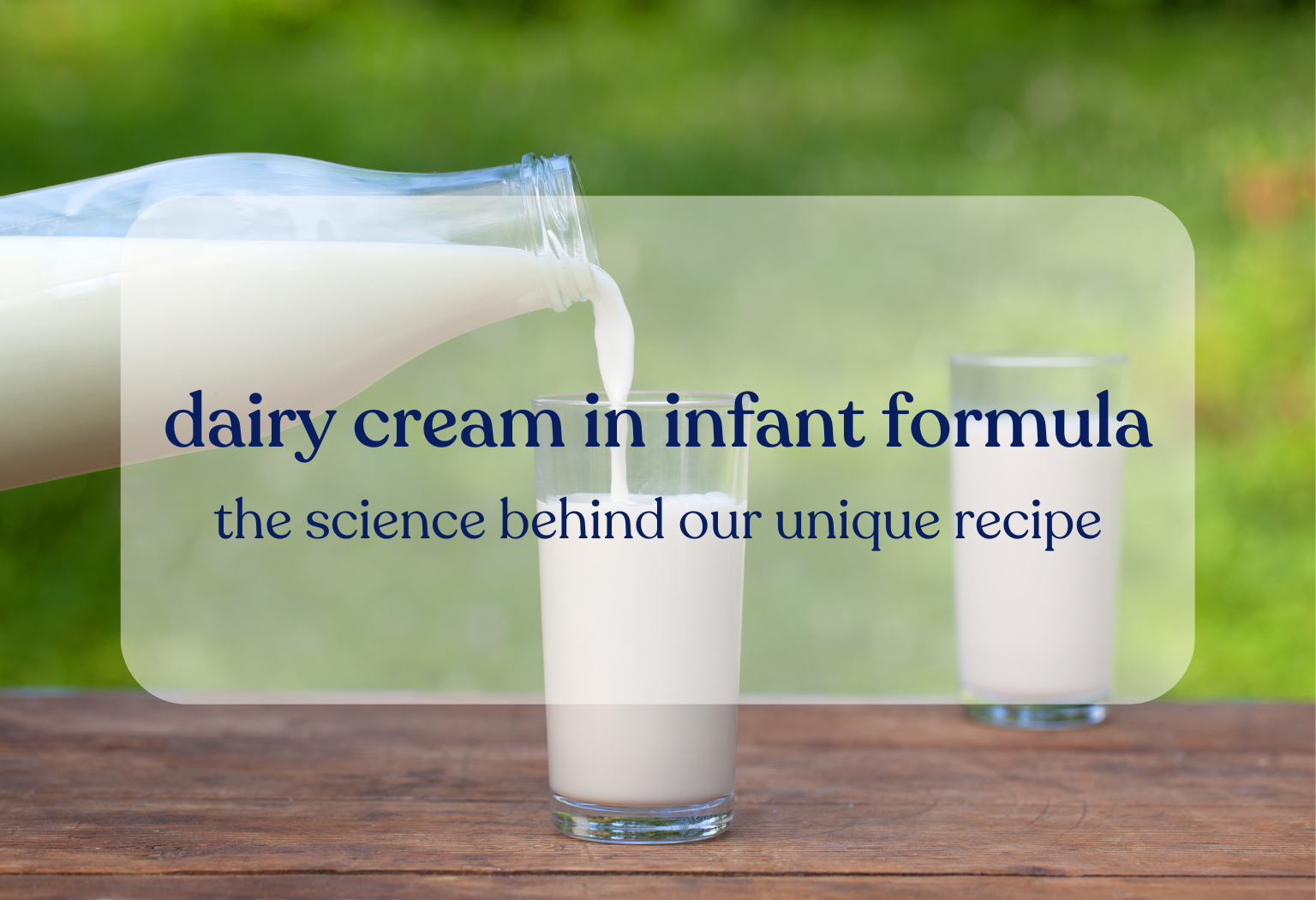Human breast milk (HBM) is considered the gold standard for infant feeding. It provides a balanced mix of nutrients essential for growth, development, and health. Breastfeeding, however, is not always possible. In such cases, infant milk formula (IMF) is the only safe alternative. Although IMFs aim to replicate HBM, differences remain, particularly in digestibility, nutrient bioavailability, and gut health support.
A recent study published in Nutrients examined the benefits of adding dairy cream to IMF. The goal was to bridge the gap between formula and breast milk in terms of nutrition and functionality.
The Role of Dairy Cream in Infant Formula
Research by Kondrashina et al. (2024) compared low-cream IMF (LC-IMF), high-cream IMF (HC-IMF), and HBM. The study highlighted key benefits of cream-enriched IMF, focusing on digestibility, nutrient absorption, immune function, and gut health.
Improved Digestibility and Nutrient Absorption
Human breast milk contains milk fat globules with a milk fat globule membrane (MFGM). This structure supports digestion and nutrient absorption. MFGM is rich in essential lipids and proteins. Many traditional formulas, which rely on vegetable oils, lack this structure.
The study found that HC-IMF improved digestion and nutrient absorption compared to LC-IMF. It released more bioactive peptides and free fatty acids, such as palmitic and linoleic acids, which are critical for growth and brain development. These nutrients were also more readily absorbed in HC-IMF, making it closer to HBM.
Support for Gut Health
Infant gut health is closely linked to digestion and immunity. Using a Caenorhabditis elegans model, the study assessed gut health support across formulas. HC-IMF better promoted gut barrier recovery compared to LC-IMF, showing benefits like HBM. This suggests that cream-enriched IMF may reduce gut issues like colic, diarrhoea, and constipation, common among formula-fed infants.
Immune System Support
The study also examined immune-modulating effects. HC-IMF stimulated anti-inflammatory cytokines, such as IL-10, at levels comparable to HBM. This indicates potential benefits for the developing immune system, including reduced infection and inflammation risks.
Why Kendamil Uses Dairy Cream?
Not all formulas incorporate dairy cream. Kendamil stands out as the only British manufacturer using full-cream milk sourced from British Red Tractor Farms. Unlike formulas that depend on vegetable oils, Kendamil’s full-cream approach retains the natural MFGM structure, which supports infant health.
Kendamil’s formula delivers essential fatty acids, vitamins, and minerals naturally present in dairy cream. It is also palm oil-free and fish oil-free, offering an environmentally conscious choice without compromising nutrition.
Benefits of Full-Cream in Infant Formula
Naturally Derived Fat Sources: Whole milk provides easily digestible and bioavailable fats, including palmitic acid, to support growth and brain development.
Improved Gut Health: Full-cream dairy includes MFGM, which aids gut health and strengthens the intestinal barrier.
Immune Support: Naturally occurring components in full-cream milk promote immune health and reduce the risk of infections.
The study in Nutrients provides strong evidence that dairy cream enriches IMF’s digestibility and nutritional profile, bringing it closer to HBM. As research progresses, cream-enriched formulas represent a step forward in infant health support.
References:
Kondrashina, A., Mamone, G., Giblin, L., & Lane, J.A. (2024). Infant Milk Formula Enriched in Dairy Cream Brings Its Digestibility Closer to Human Milk and Supports Intestinal Health in Pre-Clinical Studies. Nutrients, 16, 3065. https://doi.org/10.3390/nu16183065
Hahn, W.H., Song, J.H., Lee, J.E., & Shin, S.H. (2017). Immunomodulatory Effects of Breast Milk in Infants. Pediatric Research, 82(3), 563-567.
IMPORTANT NOTICE: Breastfeeding is best for babies. This information is intended for healthcare professionals.

